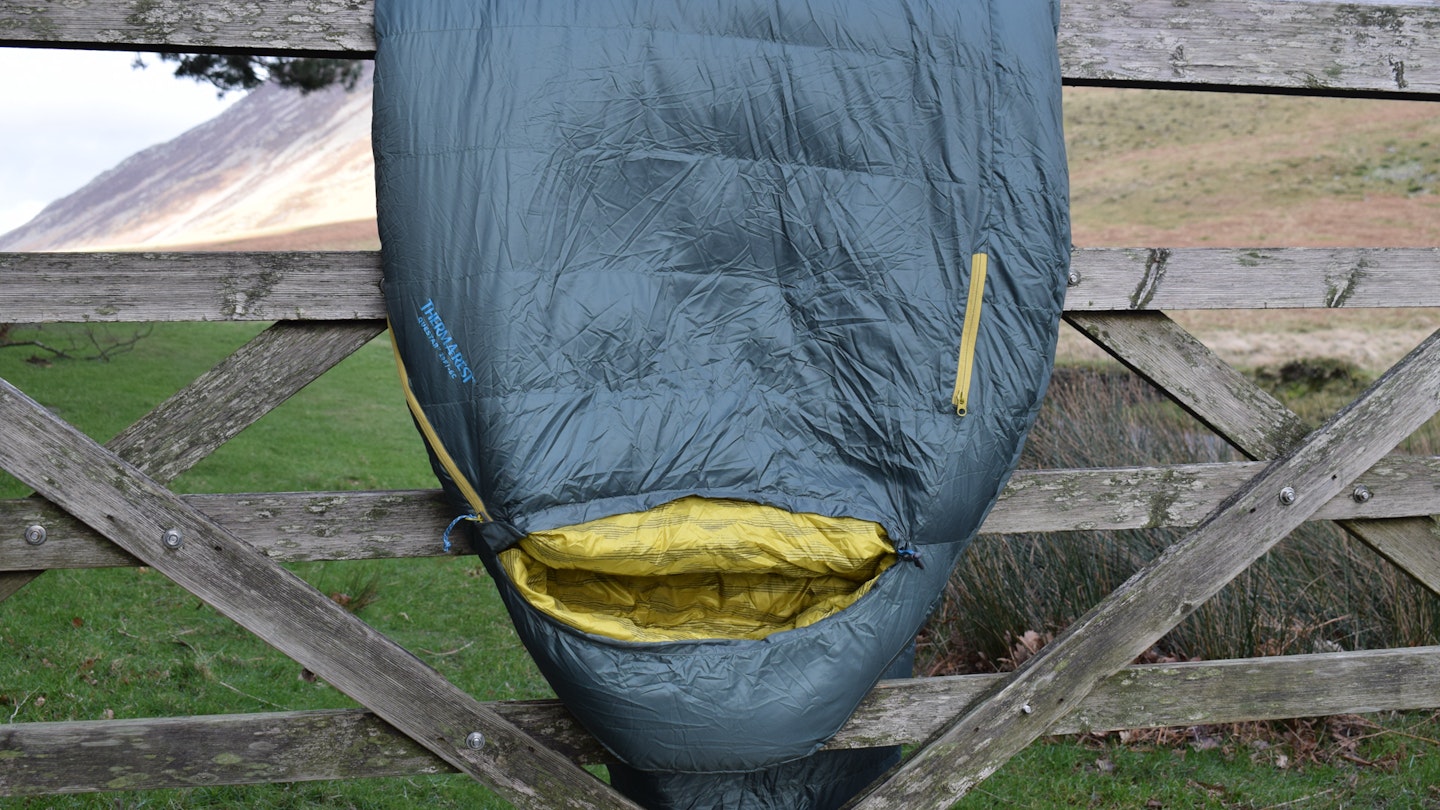We’ve put the Questar 20F/-6C sleeping bag to the test. It’s a great all-rounder: technical, lightweight, comfortable and warm at an affordable price.
Therm-a-Rest are one of, if not the, best manufacturer of sleeping bags out there. The US brand has five main sleeping bag ranges, most of which are available in three temperature ratings of 32F, 20F and 0F (Fahrenheit). Of the brand’s three down sleeping bag families, the Hyperion range is the premium product, using 900 fill power down for an incredible warmth-to-weight ratio, yet (unsurprisingly) the range is rather pricey. The Parsec bags are more mid-range, while the Questar range (at 650 fill power down) is the most affordable.
The Questar 20F/-6C weighs just 990g and packs away very compactly, yet the 650 fill power down – which is thickest where you need it most - still keeps you warm down to a 0C comfort rating. It's an impressive bag, so let's take a closer look...
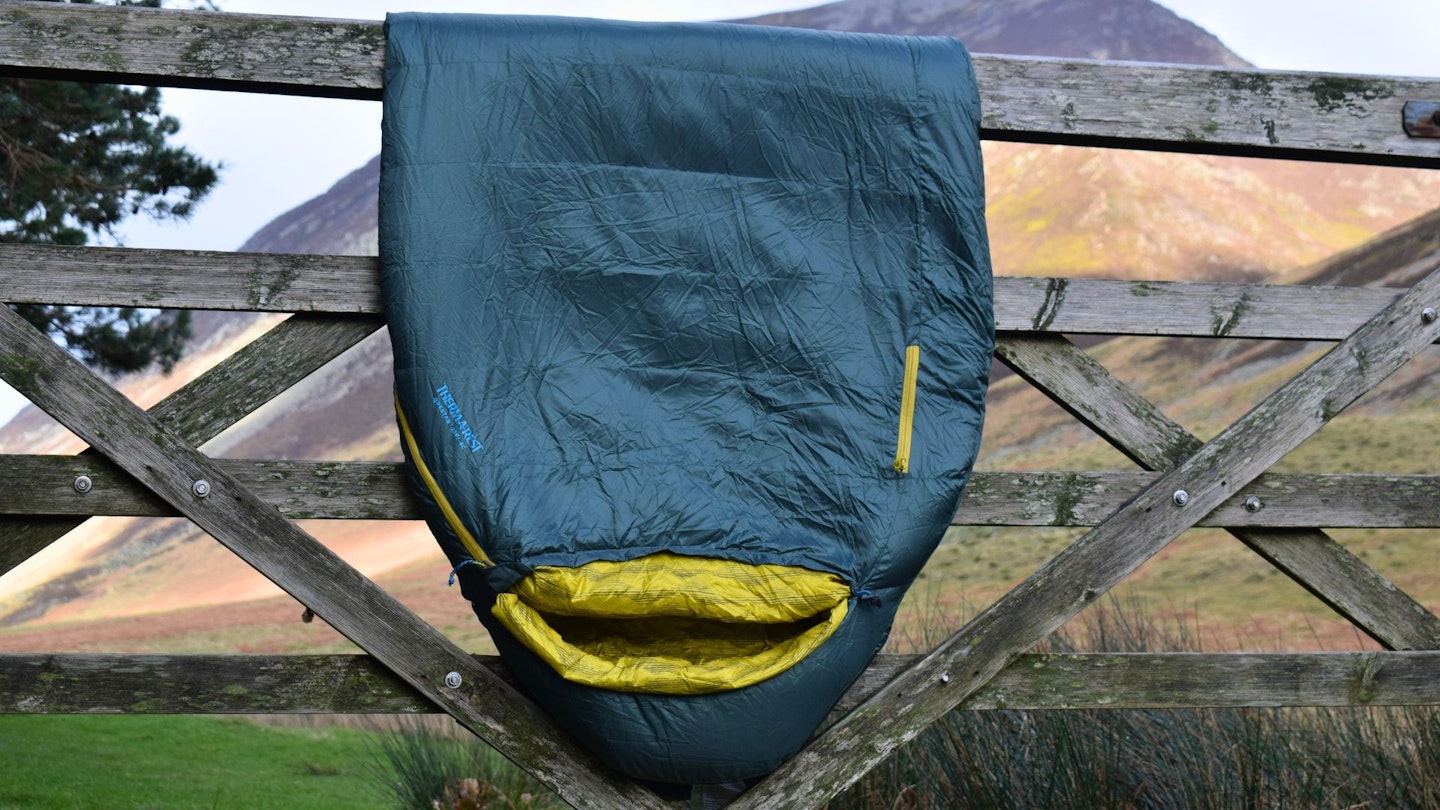
www.trekitt.co.uk
Pros
- Excellent design
- Good features
- Decent temperature ratings for price
Cons
- Not the highest fill power down
| Sizes | Small, Regular, Long |
| Packed size | 23 x 19cm |
| Weight | 840g (small), 990g (regular), 1.12kg (long) |
| Insulation | 650-fill RDS duck down w/ PFC-free Nikwax Hydrophobic treatment |
| Materials | 20D polyester lining and shell w/ DWR |
| Temperature rating | Comfort 0°C | Limit -6°C |
Temperature ratings
The Questar 20F/-6C has the following EN/ISO lab test temperature ratings: comfort 0C, comfort limit -6C and extreme -23C. This is excellent value. The Therm-a-Rest Questar 20F costs £125 less than the Rab Neutrino 400, for example, but has very comparable stats.
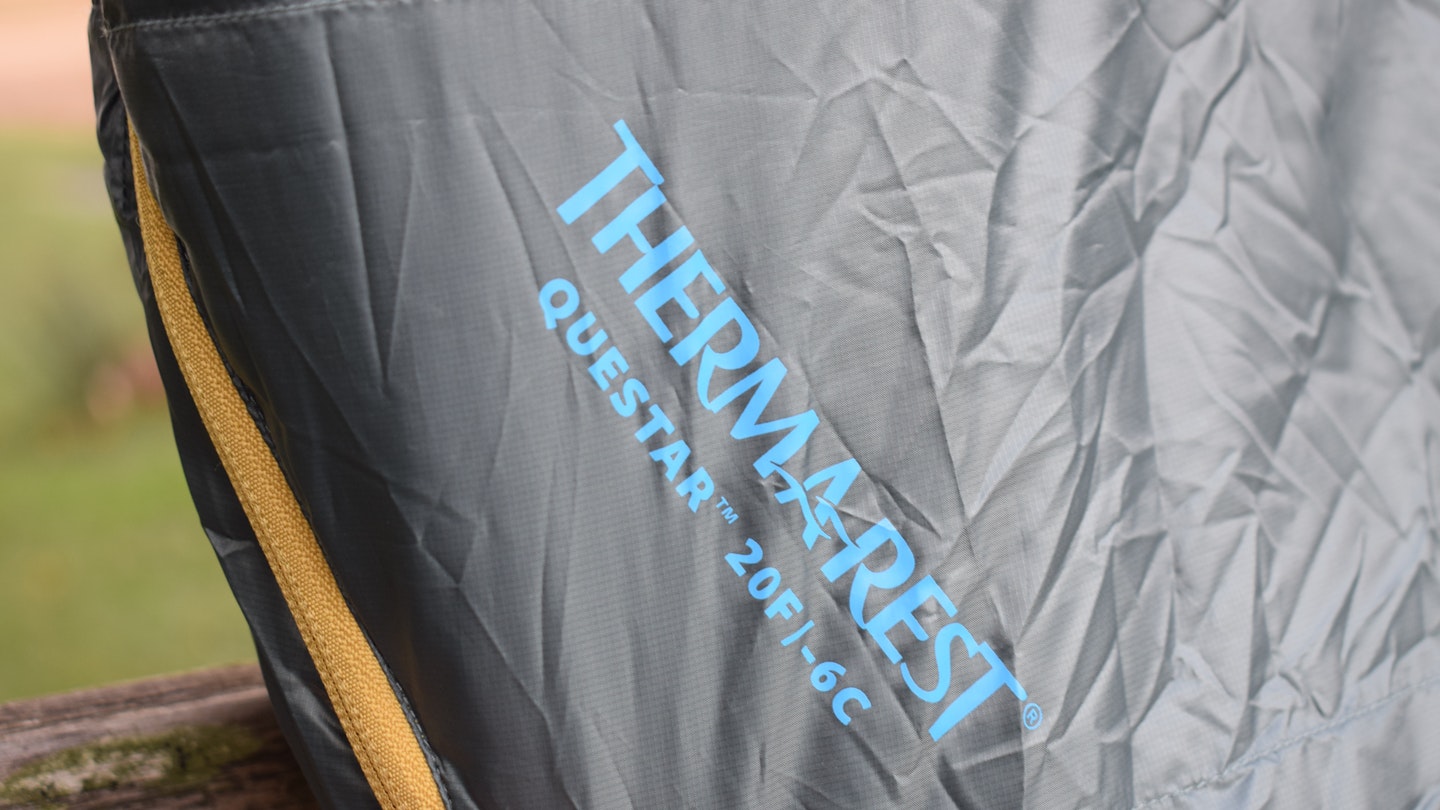
The Questar has a 0C comfort rating, compared to Rab’s -1C grade. Using the Questar 20F/-6C you should, in theory, be comfortable and cosy from spring to autumn, except on the rare nights when the temperature plummets to sub-zero. But it’s worth remembering that temperature ratings are only a guide. If you tend to feel the cold badly, you may need extra warmth than the comfort rating suggests.
If you do need something closer to a winter sleeping bag, the Therm-a-Rest Questar 0F/-18C (£380) has a comfort rating of -10C, for example. From Therm-a-Rest’s other ranges, the Saros 0F/-18C (£225) and Parsec 0F/-18C (£565) also have -10C comfort ratings.
Insulation type, fill power, fill weight
The Therm-a-Rest Questar 20F/-6C is filled with 650 fill power duck down. 650 fill power is not a particularly high quality of down (many other bags use 700, 800 or even 900 fill power down). Consequently, the down doesn’t fluff up into as thick a loft as you’d perhaps like. The flip side is that a lot of the 650 fill power down is used in this sleeping bag.
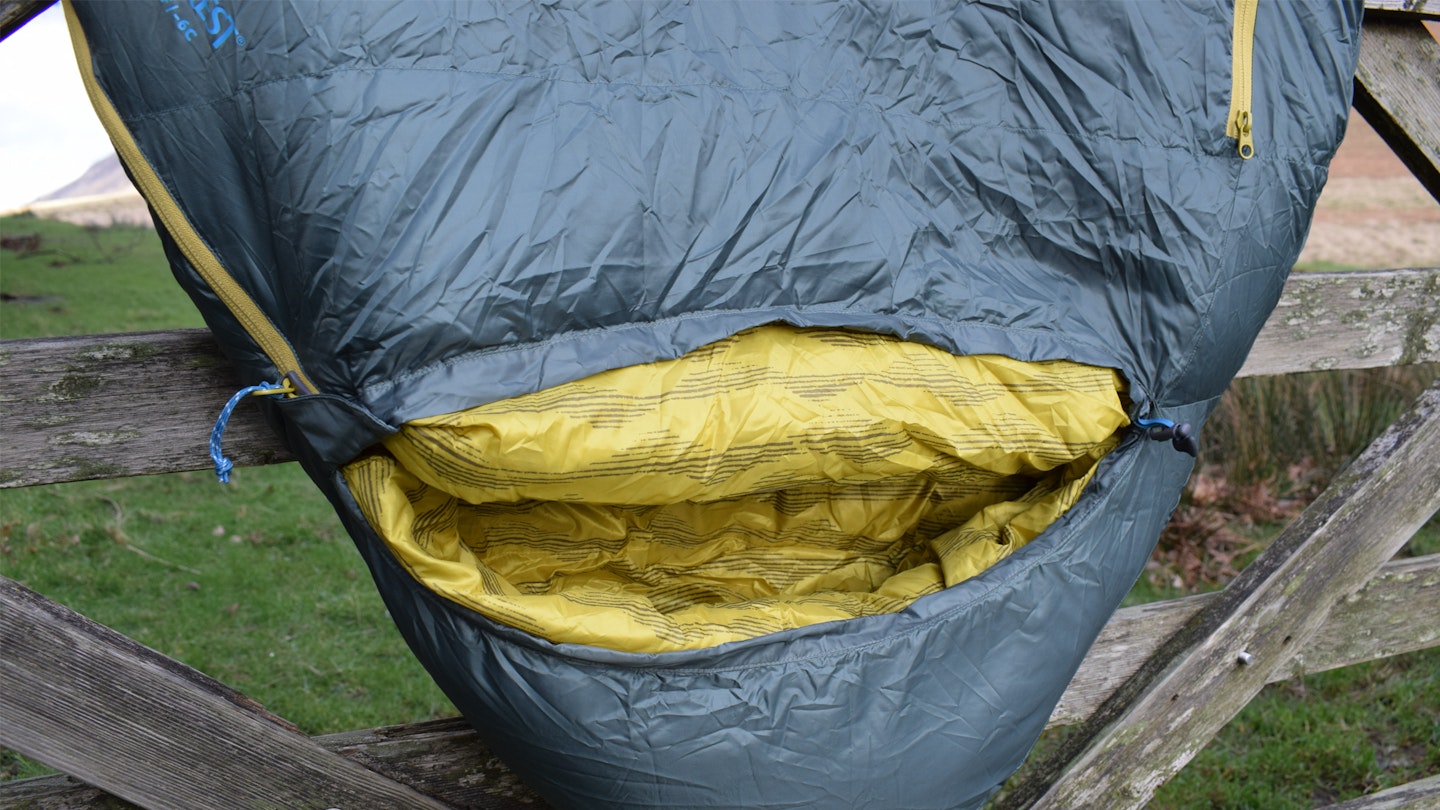
The fill weight is 540g, which is pretty considerable (the Rab Neutrino 400 only has a fill weight of 400g, for example), and ensures you still get good temperature ratings and a cosy warmth when using this bag. This approach of using a higher fill weight of a lower quality down is not uncommon. Many brands opt for this combination in their better value sleeping bags. The end result is always a slightly higher overall weight, while retaining pretty impressive temperature ratings.
All of the down used by Therm-a-Rest adheres to the Responsible Down Standard, meaning it meets important ethical criteria. It also features Nikwax’s hydrophobic fluorocarbon-free finish, which means the down absorbs 90% less water and dries three times faster than regular down, according to lab tests.
Pack size and weight
The Questar 20F/-6C clocks in at a weight of 990g in the regular version. This is far from heavy, but we wouldn't say it qualifies as a lightweight sleeping bag Consequently the Therm-a-Rest Questar 20F/-6C is not a sleeping bag for gram-counting ultralight obsessives. But for campers looking for a good compromise between price, warmth and weight, the Questar 20F/-6C strikes a near-perfect balance.
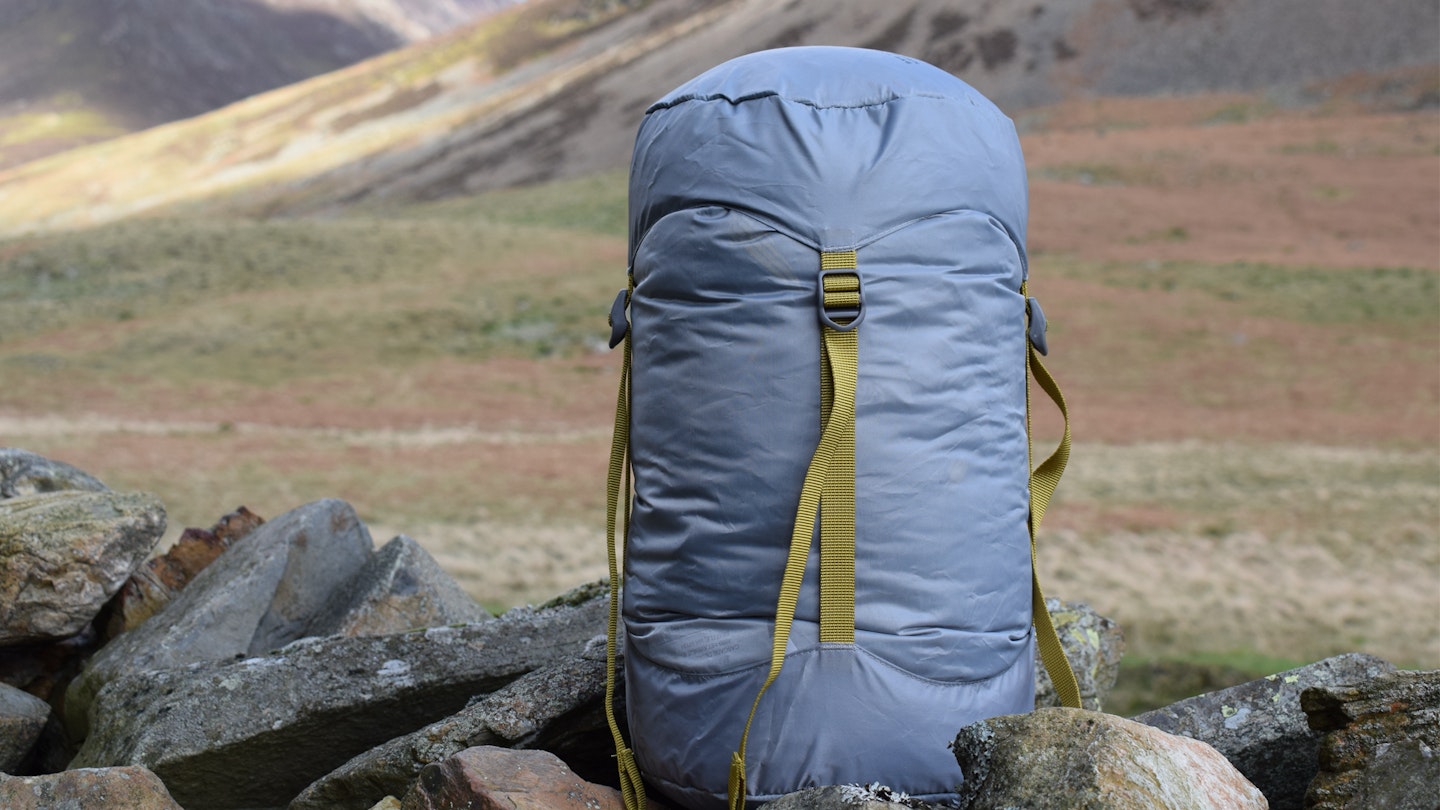
The Questar 20F/-6C weighs 840g in the small version and 1,120g in the long version. The regular sized Questar 20F/-6C compresses down to a packed size of 23cm x 19cm, when packed inside the included stuff sack. For storage at home, a fabric storage sack (60cm x 30cm) is provided. Using this sack ensures you won’t ruin the down’s loft by storing the sleeping bag in a compressed state.
Materials and sustainability
The shell of this sleeping bag is made from a 20-denier polyester with a DWR (durable water resistant) coating. The lining fabric is a 20-denier polyester taffeta. They both have that “shiny” feel to them, but are very comfy and soft too. None of the materials used in this sleeping bag are recycled, so the eco credentials are not particularly strong.
Size and shape
The tapered, mummy-shaped design of the Questar 20F/-6C is technical but generous, providing a smidge of extra wriggle room compared to some other bags. Therm-a-Rest says the regular-sized sleeping bag is suitable for anyone up to 183cm tall (6ft) and the official dimensions are as follows: length 203cm, shoulder girth 160cm, hip girth 155cm and footbox girth 117cm.
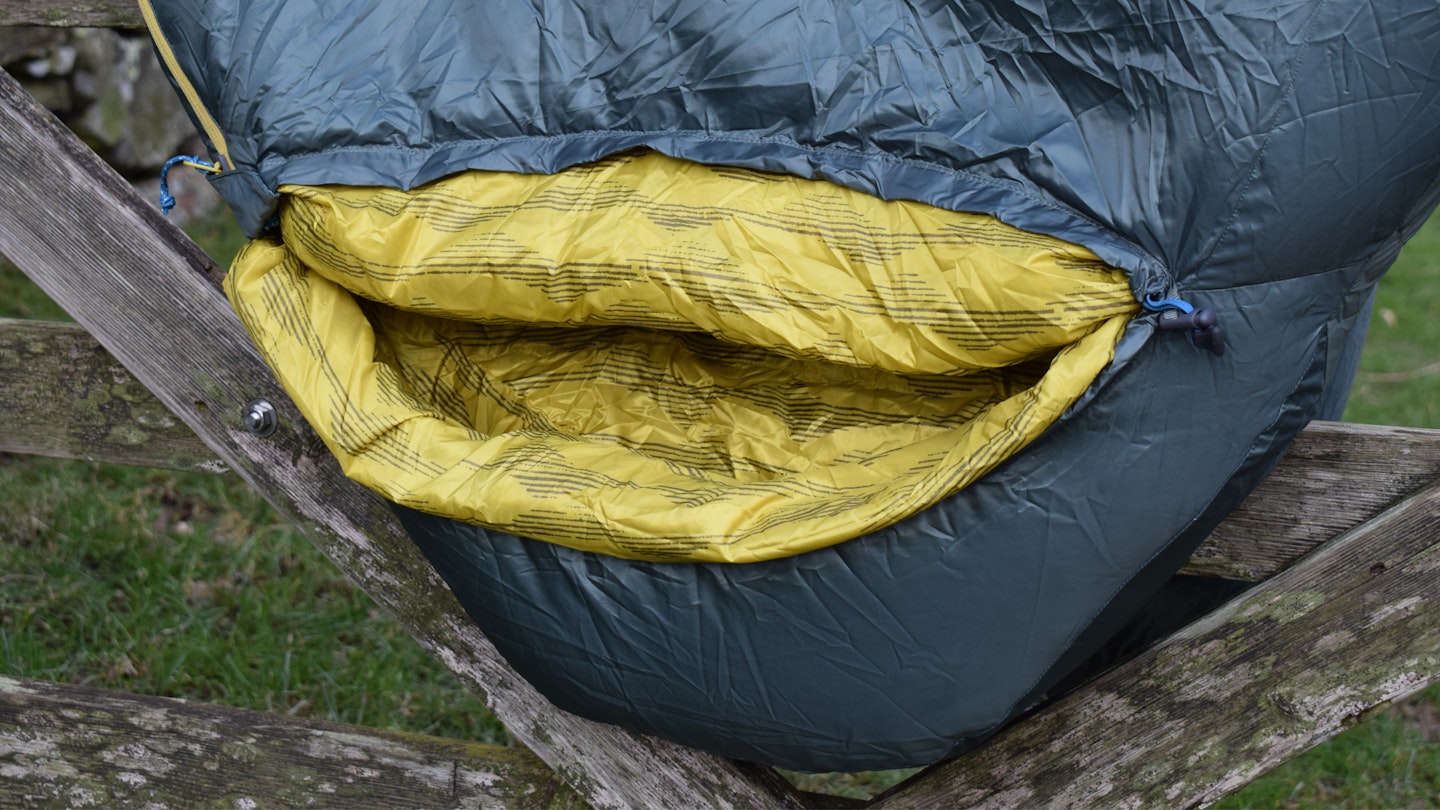
Interestingly this means the Questar 20F/-6C has the exact same shoulder girth as the Rab Neturino 400, but then it’s 21cm roomier around the hips and 15cm more spacious in the footbox. This is because the Questar has a less severe taper than the Neutrino. This approach has pros and cons. Some body shapes will fit the Questar better, and those who tend to squirm and shuffle at night will benefit from the extra room. The downside is that the extra room may be unnecessary for some users, particularly those who like to be tightly cocooned.
Therm-a-Rest, however, is adamant the extra room adds comfort without reducing all-round warmth. Known as its WARM (With Additional Room for Multiple positions) fit, Therm-a-Rest says the Questar 20F/-6C allows for various natural sleep positions while maintaining thermal efficiency. This design has been perfected in Therm-a-Rest’s onsite cold chamber, according to the brand.
The small version of the Questar 20F/-6C is 185cm long and suitable for anyone up to 5ft 5” tall, while the long has a 216cm length and is suitable for anyone above 6ft up to 6ft 5”.
Features
This excellent sleeping bag is loaded with all of the comfort features Themarest bags are known for. The best of these features is Therm-a-Rest’s clever SynergyLink system. These removable ultralight straps connect to your sleeping bag via little fabric hooks before looping over your sleeping mat. The end result is that your sleeping bag is strapped in place on your mat, ensuring you don’t slide off it overnight. This provides a more integrated sleeping system and improves overall thermal efficiency. Each sleeping bag comes with two SynergyLink straps.
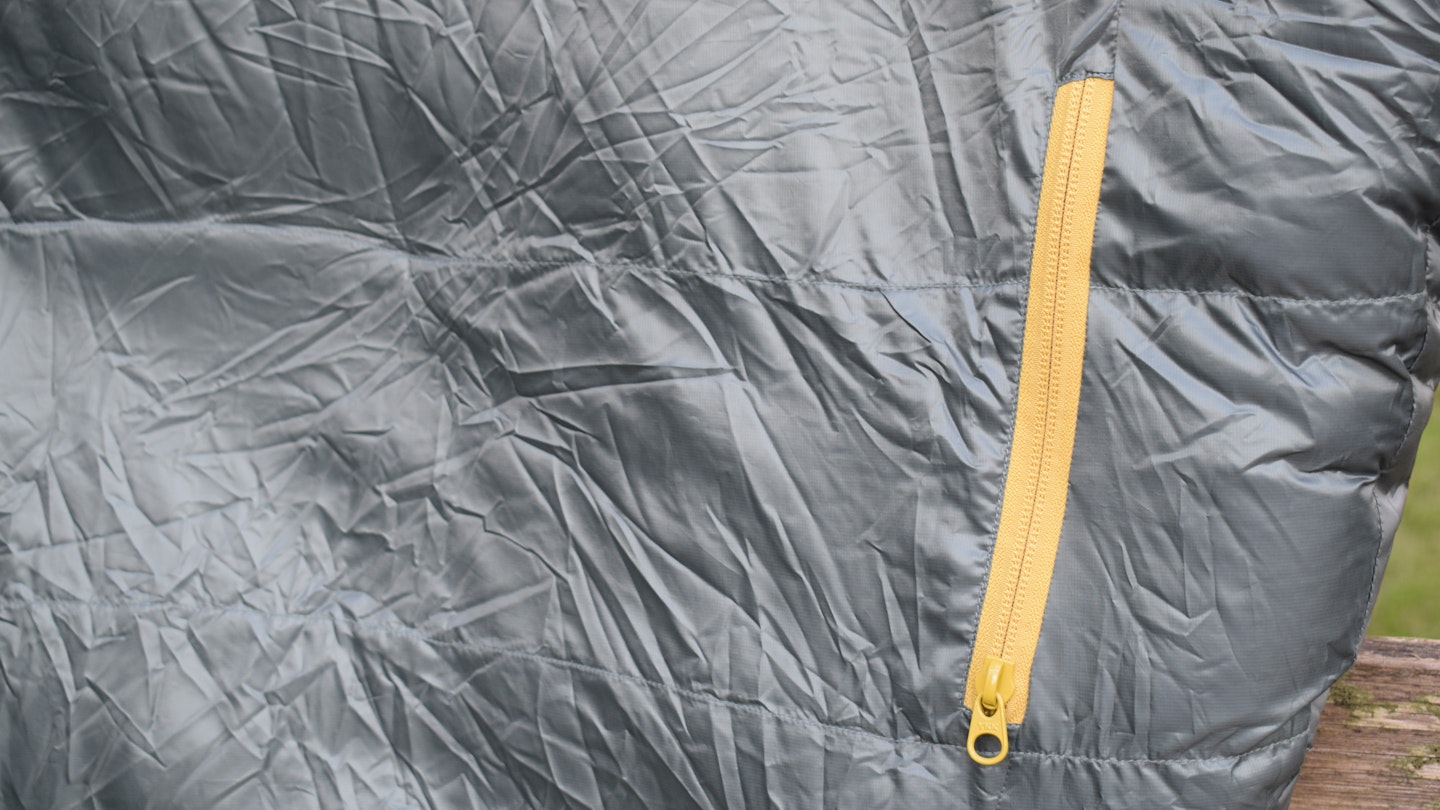
Other features include a heat-trapping draught collar at the neck, a full-length zipper draught tube, snag-free main zipper, cinchable hood and external zip pocket, as well as a super-cosy down-lined footbox (Therm-a-rest’s wonderfully named ‘Toe-asis’). In terms of baffles, you get a box baffled construction with the Questar 20F/-6C, with mesh walls used to maximise loft and minimise cold spots.
Zoned insulation – with more down placed where you need it most – further helps to improve the warmth-to-weight ratio. 60% of the insulation is placed on the top and sides (where you need it most) and 40% on the underside.
Verdict

the Therm-a-Rest Questar 20F/-6C is an excellent sleeping bag with good temperature ratings from a reliable brand – but you only get 650 fill power down.
How we tested

The Questar 20F/-6C was tested and reviewed by James Forrest. James is a freelance outdoor writer who conducts gear reviews and writes features for LFTO and our magazine, Trail.
Based in the Lake District and a prolific peak-bagger, James is one of the most high-profile outdoor writers in the UK.
